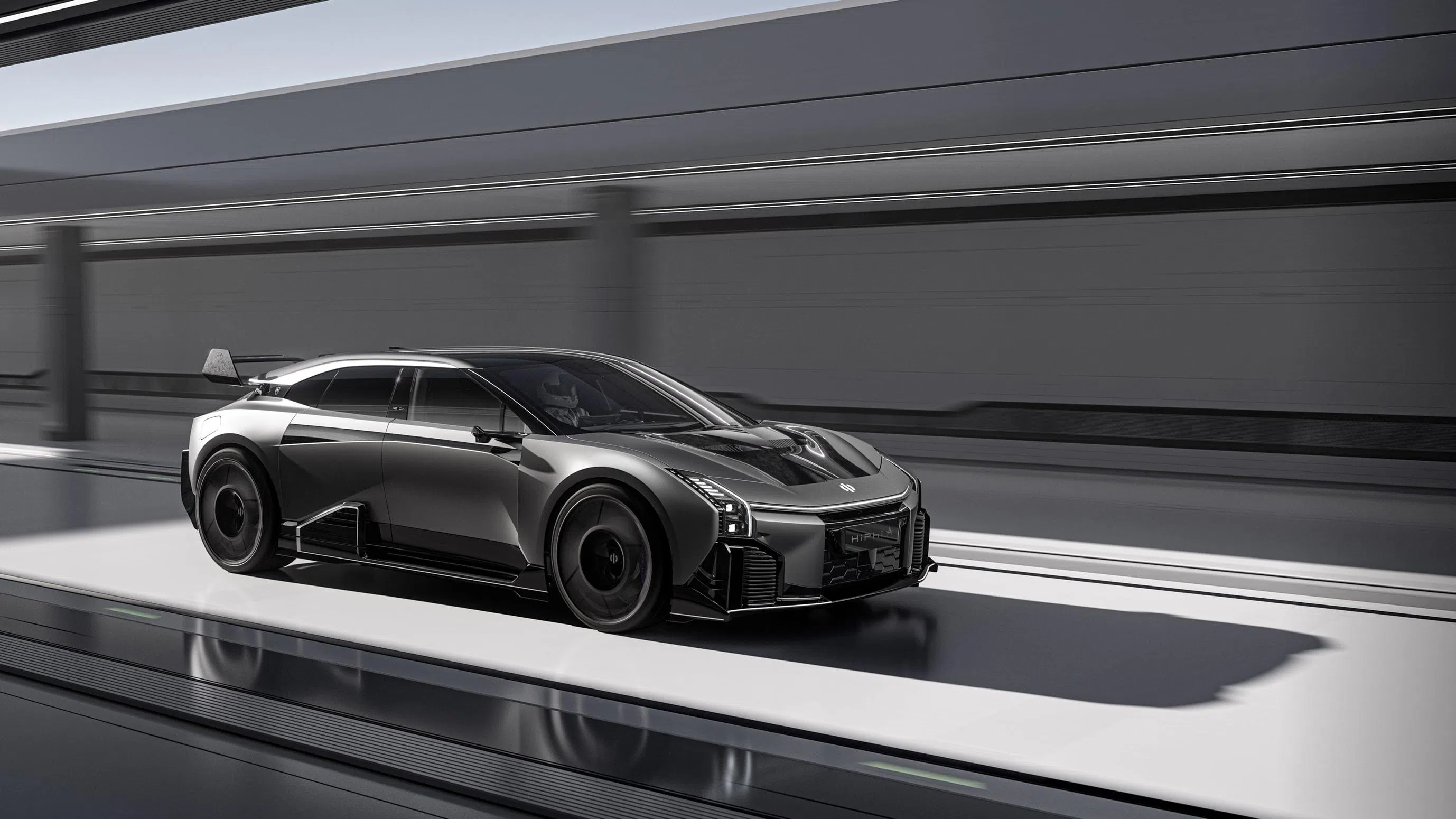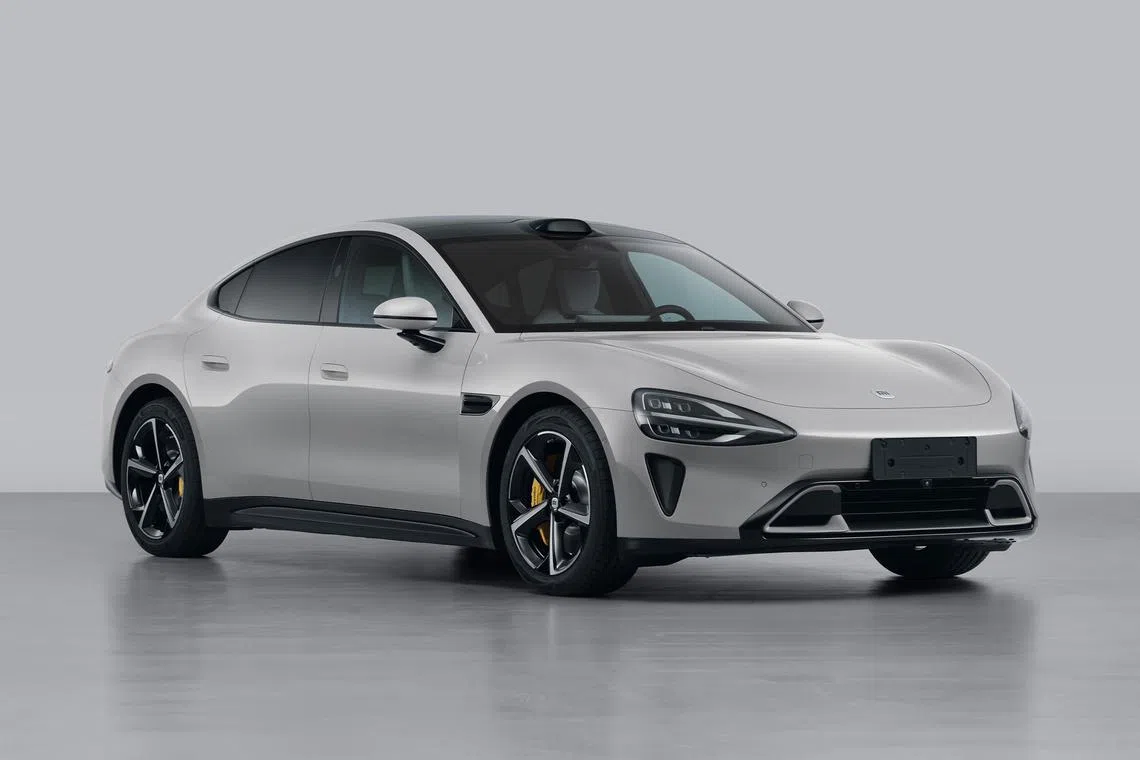Fast Lane: EQE SUV arrives, Renault to list EV arm, BAIC to make Xiaomi cars
Sign up now: Get ST's newsletters delivered to your inbox

Mercedes-Benz EQE SUV: An electric sport utility vehicle based on the E-class.
ST PHOTO: CHRISTOPHER TAN
Follow topic:
Eighth electric Mercedes lands
In what could be the last all-new model launch for the year, Mercedes-Benz unveiled its EQE SUV at the newly opened Punch Room in The Singapore Edition hotel on Tuesday.
The electric sport utility vehicle (SUV) – Mercedes’ eighth electric model here – offers more space than the EQE saloon despite being 90mm shorter bumper to bumper.
Measuring 4,863mm long, 1,940mm wide and 1,686mm tall with a 3,030mm wheelbase, the car benefits from a higher ceiling. Boot capacity stands at 520 litres with all five seats occupied, expanding to 1,675 litres when all the 40:20:40 split-fold rear seats are collapsed.
The car offers power output from 180kW to 215kW, with the AMG variants producing 350kW to 460kW. At launch, the 180kW EQE300 rear-wheel drive is available at $430,888 with certificate of entitlement. It hits 100kmh in 7.6 seconds and promises a range of up to 565km.
Hands-off, eyes-off BMW at up to 60kmh
BMW is introducing a Level 3 autonomous function to its 7-series. It will allow drivers to take their hands off the steering wheel and temporarily divert their attention away from the road.
The Personal Pilot L3 relieves the person at the wheel of the task of driving in certain situations and controls the car’s speed, distance to the vehicle ahead and lane positioning at up to 60kmh on highways.
BMW says it will be the first system of its kind that can also be used in the dark.
Previously, its new 5-series became the first car in Germany and the United States to be driven with semi-autonomous functions at speeds up to 130kmh. The BMW Highway Assistant allows for hands-off driving (but not eyes off), with automatic lane-changing.
Renault to hive off EV business to newly formed Ampere

Ampere: Foundation for a budget EV by 2025.
PHOTO: AMPERE
French carmaker Renault is targeting more than €10 billion (S$14.6 billion) of revenue by 2025 for its electric vehicle (EV) and software arm Ampere, according to Bloomberg.
Ampere aims to list in an initial public offering by May 2024. It plans to introduce Legend, a compact Europe-made EV that will sell for less than €20,000 – putting it in the price range of petrol cars such as the Mazda 3 and Citroen C4.
It will have an extensive line-up by 2031, including the Megane E-Tech, Scenic E-Tech, Renault 5, Renault 4 and two additional yet-unnamed vehicles. The new outfit aims to break even by 2025, with an operating margin of at least 10 per cent by 2030.
Polestar to make cars in South Korea
In what may be a move to hedge against the prolonged United States-China trade war, Chinese-owned Swedish electric carmaker Polestar says its future Polestar 4 will be made in Busan, South Korea, as well as its original location in Hangzhou Bay, China.
Production in Busan is expected to start in the second half of 2025. The Busan plant belongs to Renault Korea Motors, which once made Samsung vehicles.
Earlier, Volvo Cars announced that its new EX30 electric subcompact crossover will be made in Ghent, Belgium, in addition to an existing plant in Zhangjiakou, China.
Meanwhile, Tesla is reportedly looking at locations in India and Germany to make its so-called €25,000 (S$32,180) model. In 2022, Tesla’s Shanghai plant overtook its factory in Fremont, California, to become its largest car production facility.
Chinese EV with claimed two-second century sprint, 300kmh top speed

HiPhi A: Three motors, 0-100kmh in around two seconds, top speed of close to 300kmh.
PHOTO: HIPHI
HiPhi, a premium EV brand of six-year-old Chinese tech start-up Human Horizons, has unveiled the high-performance limited production HiPhi A. Delivery will begin from the first quarter of 2025.
Built on an 800-volt platform with a 1,500kWh battery, the car is powered by three motors – one in front and two in the rear. It promises a peak power of up to 1,305hp, with motors spinning at 22,000rpm. Its claimed 0-100kmh sprint is just over two seconds, with a top speed close to 300kmh.
In an industry first, the battery pack features a carbon-fibre bulletproof bottom shield and a fireproof carbon-fibre top cover.
State-owned BAIC to make cars for Xiaomi

Xiaomi SU7: A rival to the Tesla Model 3.
PHOTO: BLOOMBERG
A unit of Beijing-based carmaker BAIC Group has applied to regulators for approval to build two Xiaomi-branded electric vehicles, Reuters reported, citing China’s industry ministry’s website.
The foray by Xiaomi, best known for making smartphones and appliances, could intensify competition in the world’s largest car market, where overcapacity and slowing demand have fanned a bruising price war and hit supplier margins.
BAIC is proposing to build the new Xiaomi SU7 with BYD’s lithium-iron phosphate batteries, and the SU7 Max with CATL’s lithium-ion batteries. The cars have a claimed top speed of 210kmh and 265kmh respectively.
Xiaomi has also built a separate plant that can produce 200,000 EVs annually in Beijing.


